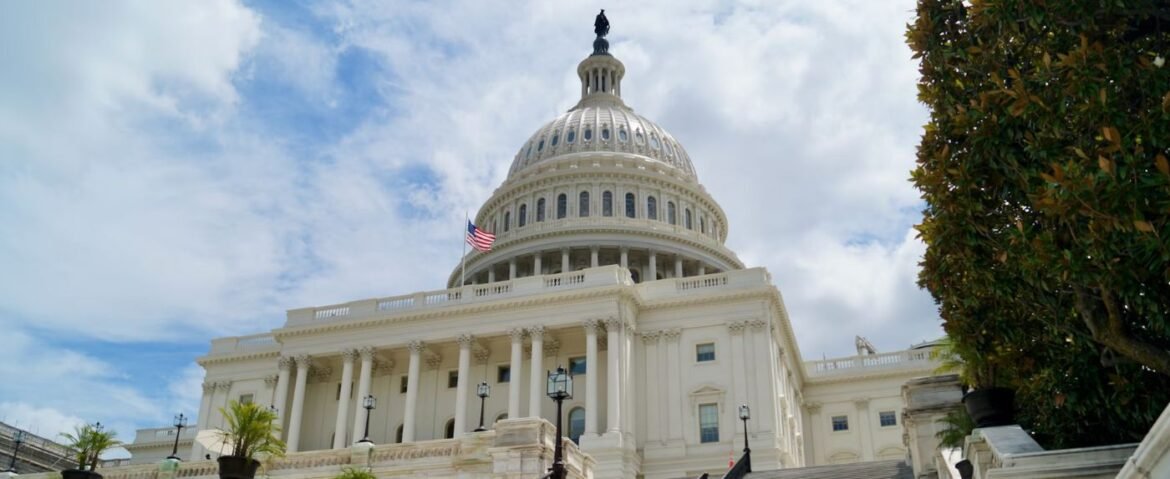Government Shutdown: The Story
The Government Shutdown was among the biggest administrative stops in recent history of U.S. history and had an impact on several federal agencies, employees, and national services.
Due to a funding stalemate between congressional parties, the shutdown caused mass panic about frozen activities, payment delays, and restricted access to government resources. Read another news on newstodate.co.uk.
This most recent shutdown was a result of intense division in the U.S. Congress in terms of allocating budget to federal programs. Before a compromise was achieved, lawmakers argued over priorities on spending, funding border security, and welfare.
What Caused the 2025 Federal Shutdown?
The federal government shutdown in 2025 was a result of prolonged differences within fiscal policies and budgetary spending limits.
Even after multiple negotiation sessions, a bill to fund everything could not be passed by the legislators by the time the fiscal cliff ended. This led to an automatic suspension of the non-essential services within the federal departments.
A large number of agencies were put in stasis, and thousands of government workers were furloughed. The most important services, like national defense, postal operations, and emergency care, remained, but in reduced capacity.
The contracting government workers were not the only ones impacted by the US administration funding halt; there were also contractors, suppliers, and other dependent sectors.
How the Deadlock Was Broken: Senate Vote
The vote in the Senate on the funding bill was the turning point that marked the crisis resolution. The bipartisan deal was reached after several weeks of tension, and the federal administration was restored and reopened.
In the US legislative session, the roles of some influential senators like Tim Kaine, Jeanne Shaheen, and Angus King highlighted the need to get regular business back on track to avoid the economic burden in the long term.
The voting agenda in the Senate today centered more on restoration of the budget, and both the democrats and republicans voting indicated their interest in a stable society.
Senator Chuck Schumer, among other leaders, proposed a program to see to it that future shutdowns could be circumvented after a bipartisan talk could be held earlier.
The project on government financing in the Senate’s passage gave the federal renaissance and monetary redistribution the green light.
Federal Operation Effects of the Shutdown
The stagnation of the federal operations affected important areas of the transportation sector, immigration, and the welfare of the people. Slowed down airline services, hold-up passport services, programmed stalled housing services became further burdens to the citizens.
Donald Trump Reflects on Year One: Triumphs and Challenges
Federal workers were unsure about when they would get their next paychecks because budget operations were frozen. Analysts determined that millions of lost productivity were incurred every day of the shutdown.
According to the shutdown situation report, there were close to 800,000 federal employees whose immediate impact was being felt, and the effects were being felt in the surrounding local economies based on federal funding.
Market Response and Economic Repercussions
The funding freeze was initially negatively received by the financial markets, and investor confidence dwindled as people feared fiscal instability. But after the federal reopening announcement was issued, major indices recovered, indicating renewed optimism on economic continuity.
The United States’ standoff over the budget of 2025 showed weaknesses in administrative planning and showed that there is a need to have improved crisis-prevention frameworks.
With the passage of the funding bill, businesses relying on government contracts came back to business, and consumers now had a lot more confidence.
The Place of the Major Legislators in the Termination of the Shutdown
A number of the lawmakers played a significant role in brokering the reopening deal. Senator Tim Kaine supported the idea of bipartisan collaboration, whereas Senator Dick Durbin underlined the need to ensure the stability of workers and an immediate wage increase.
Senator Maggie Hassan encouraged the leadership to ensure disruption in the future by setting up more transparent budget bargaining procedures.
Senator John Cornyn and Senator Susan Collins expressed a bipartisan solution on the Republican side to a majority that guaranteed that the bill would be passed. Their voting highlighted a collective attempt to bring about administrative sanity.
Was the Immediacy of reopening Federal Agencies?
Yes, the federal reopening plans were quickly coming into effect after being approved by the Senate. All the crucial agencies like Homeland Security, Treasury, and Health and Human Services were able to resume normal functioning within a day (24 hrs). Agencies recalled furloughed workers and started clearing backlogs on pending work.
Nevertheless, the entire functionality of all the departments required several days, and every division was required to confirm budgetary allocations and reallocate staff.
The US administrative reopening was a great move towards the normal operation of governmental processes, which saw services such as passport processing, taxation assistance, and federal aid being offered without any further restrictions.
Social Response and Political Theory
The reaction of the masses to the Government Shutdown termination was divided. Those who rejoiced at the revival of services wailed at lawmakers who failed to curb the escalation of the dispute to this extent.
Political commentators pointed out that both sides wanted to use the shutdown to play a game of politics to shape the minds of the electorate in the next elections.
The compromise on funding discussed by democrats was considered a calculated step in order to prevent further economic harm without sacrificing credibility with working-class voters.
Meanwhile, the comments of former President Donald Trump sparked debate again on the priorities of spending, giving a possibility that this may result in the same standoff in the future on budgetary matters as long as partisanship continues.
What Happens Next? How to Avoid Future Shutdowns
The vote on the budget resolution is an indicator of a new promise of enhancing legislative collaboration. Bipartisan lawmakers have vowed to improve the communication between committees as a way of ensuring that such impositions do not arise in the future.
There are also talks of changing the federal budget impasse procedures, and there might be automatic temporary funding measures in place to carry on with the main services in case of missed deadlines.
This would reduce the chances of having federal workers without an income and prevent disruptions in major programs by the government.
The federal closure schedule is likely to be used as an administrative planning and inter-party collaboration case study. As the agencies are returning to their normal operations, attention turns to the long-term budget reform and recovery of the economy.
A Bipartisan Path Forward
The bipartisan consensus that terminated the Government Shutdown demonstrated that congressional unity can still exist even during a polarized atmosphere. The two leading party representatives admitted that the well-being of citizens should be prior to political clout.
With the implementation of the funding restoration agreements underway, the government is now focusing on the long-term initiatives, such as infrastructure development and social welfare projects. Analysts believe that the future of the second case of shutdown case would be avoided through further cooperation.
Conclusion
The Government Shutdown ended,, and this is the point of turning around in the U.S. fiscal management. Federal activities have been restored, giving relief to millions of Americans,, with the Senate giving a decisive vote to the bill to fund the federal operations.
The dedication toward bipartisan cooperation by the lawmakers shows that they value the idea that governance must not be about division but stability.
Although the crisis had a short-term destructive impact on services and the economy, it has also led to essential debates regarding accountability, fiscal budgeting, and legislative cohesiveness.
In the future, it is necessary to have better communication, open negotiations,, and preventive funding solutions in order to make sure that a similar paralyzing federal government closure does not happen again in the nation.
FAQs
Is the Government Shutdown officially concluded?
Yes, the shutdown has been terminated after the Senate passed the funding bill that will boost federal operations.
When did the federal employees resume work?
The majority of employees were back within a span of 24 hours when the bill passed, and the services were fully restored within the following days.
What was the reason behind the 2025 Government Shutdown?
It was precipitated by a budget stalemate between Congress parties on expenditure interest and fiscal measures.
Was the funding resolution agreeable to both?
Yes, Democrats and Republicans voted in favor of the bipartisan funding bill, which would bring the government back to its feet.
Is another Government Shutdown in the Offing?
There has been an indication by lawmakers not to engage in future shutdowns through better budget planning and negotiation techniques.


